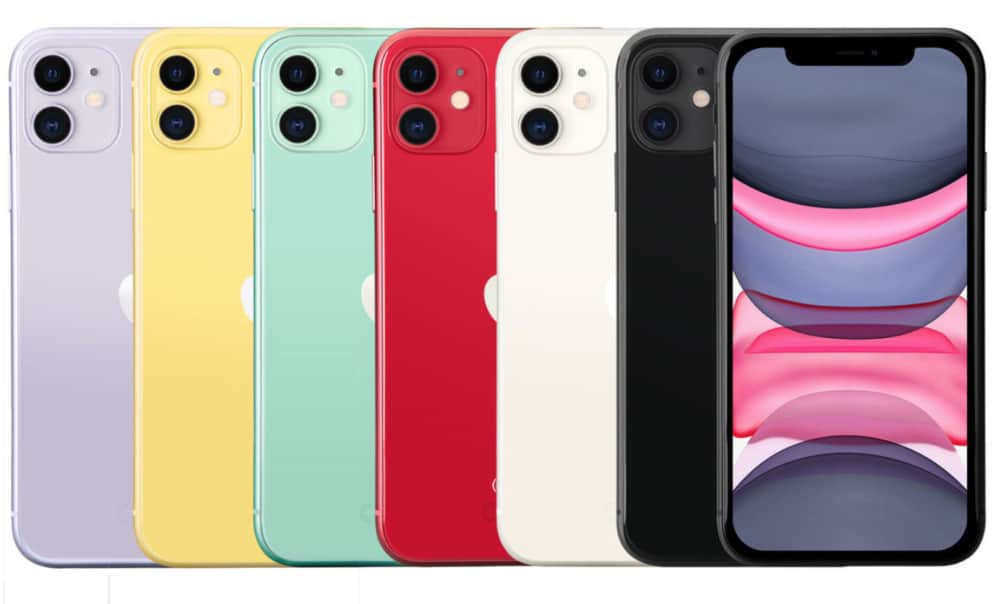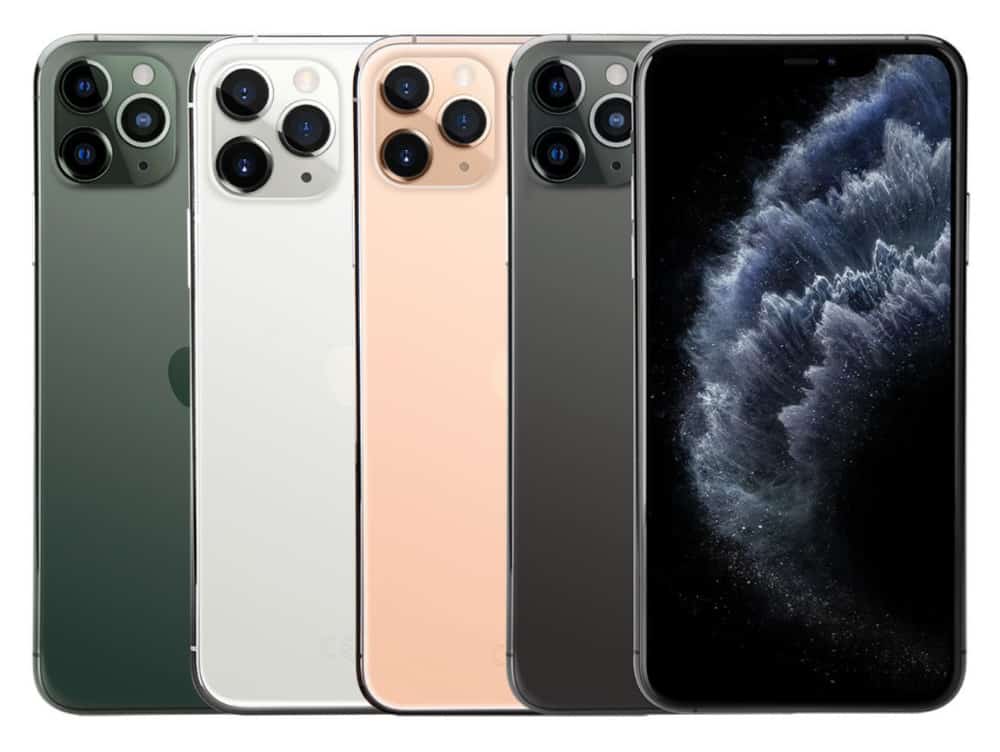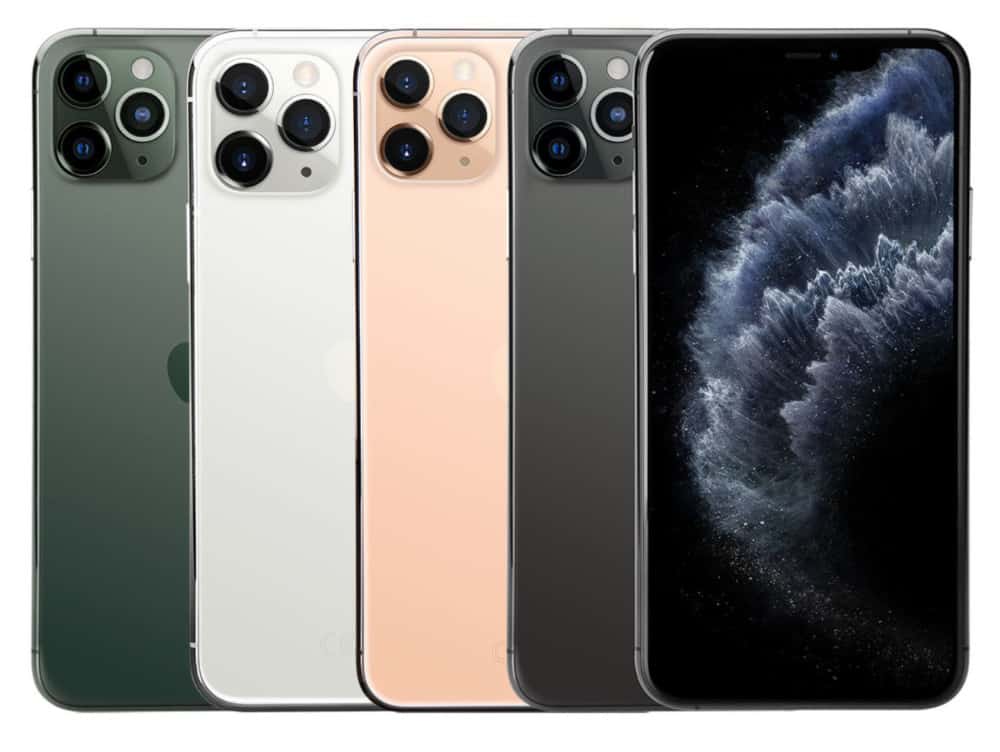Buying an iPhone used to be simple; Apple released one model each year in a range of storage options. Nowadays, you have multiple models to choose from and they’re all slightly different – and not just in terms of price and size.
No, you’re looking at different sized batteries, different cameras, different screen technology, and, most importantly, different prices…
Don’t worry, though, by the end of this guide you’ll know exactly what model iPhone you want – just make sure you read everything right to the last sentence! We’ll cover all the different models, how they differ, which has the best cameras, and what storage options to go for (and which to avoid).
Buying Your First iPhone – Getting Started…
You want an iPhone. That’s great. Apple’s iPhones, pound for pound, while more expensive than their Android counterparts, tend to last longer, get vastly superior software support, and have way more selection with respect to applications and games.
Example? I have an iPhone SE, it launched YEARS ago. But it still works great and, best of all, it is still getting iOS updates as soon as they’re released. My Galaxy S8, on the other hand, which is newer and arguably better will not receive another Android update.
This is the #1 difference between Android and iPhone; with iPhones, you’ll get software support (meaning iOS updates) as soon as they’re ready for years to come. If you get the iPhone 11, for instance, you’ll still be getting software updates for it come 2025. And the phone itself will still function great too.
This is why they cost a bit more to acquire; they’re made to last, designed to function properly over longer spans of time, and this, along with the always-up-to-date software is the #1 reason why millions of people will ONLY use iPhones.
Apple’s iPhone 11 Range (AKA The Latest Models)
If you want the latest iPhone model, you’re looking at the iPhone 11 range which is comprised of three distant models (at three distinct basic price points). And those models are as follows:
iPhone 11 – The iPhone 11 is the standard, entry-level model. It replaces the outgoing iPhone XR and is the cheapest option. Prices start at $699 for the handset and there are plenty of carrier options to choose from both in the UK and the US.

- LCD Display
- Dual-Lens Camera
- 6.1in Display
- 128GB or 256GB of Storage
iPhone 11 Pro – The iPhone 11 Pro is the “flagship” model of Apple’s iPhone 11 range, just in a slightly smaller package. It features a 5.8in OLED display, the smallest in the range, a triple-lens camera, and comes with up to 512GB of storage. The entry-level model, AKA the cheapest option, is the 64GB model.

- Smallest Display of The iPhone 11 Range
- Display is OLED
- Features Apple’s Most Advanced Triple Lens Camera
- Up To 512GB of Storage
iPhone 11 Pro Max – The iPhone 11 Pro Max is the King of Apple’s iPhone 11 range. It is identical to the iPhone 11 Pro in all aspects, save for the difference in display size (it features a 6.5in OLED panel) and a larger internal battery for extended battery life. The iPhone 11 Pro Max, for this reason, is the most expensive iPhone you can buy right now.

- Largest OLED Display of All (6.5in OLED)
- Triple-Lens Camera
- Biggest Battery
- Up To 512GB of Internal Storage
As you can see, there is quite a bit of difference between these three iPhone 11 models. For 99.9% of people, the iPhone 11 will be more than enough – it’s super powerful, thanks to its A13 CPU, and it looks great. If you can live without OLED panels and a third camera unit, or you just want to save some money, the $699.99 iPhone 11 is the one to go for.
On the other hand, if you want the best of the best, so, the best display, the best camera, and the best battery life, you’ll want to be looking at either the iPhone 11 Pro or the iPhone 11 Pro Max. The latter of which is the #1 option for power-users that demand the absolute best from their phones at all times. Me personally? I’d go with the iPhone 11.
Do You Need The Latest iPhone?
Remember what I said earlier about iPhones lasting longer than Android phones? This creates plenty of opportunities for savvy consumers to save a bunch by going after older iPhone models instead of the priciest new ones. Example: the iPhone XR, Apple’s most popular iPhone to date, is now heavily discounted, following the release of the iPhone 11.
Furthermore, even older models like the iPhone X and iPhone 8 Plus can be picked up for even less. The benefit of doing this is that you can buy the iPhone outright and then shop around for the best SIM-only deals. Done right, this method of acquiring an iPhone can save you hundreds of dollars over a 12 month period, as you’re not locked into a carrier and are free to switch over to a better deal whenever you like.
A third option would be going the refurbished route. I have bought multiple refurbished iPhones and Macs from Gazelle over the years, so I am a huge advocate of this approach. You’re essentially buying a “used” iPhone but the difference here is that it doesn’t look used. In fact, it looks and functions as good as new – only it’s 40% cheaper than usual!
If you’re in the US and you like the idea of this, check out Gazelle – it offers a huge range of refurbished iPhones, from the iPhone 8 up to the iPhone XR and iPhone 11. It also does Macs, iPads, and Samsung phones too. If you’re looking to get an iPhone for the cheapest possible price, you really cannot beat this method in my opinion.
How Much Storage Do I Need?
When you know what model iPhone you want, the next thing you have to decide is how much storage do you need? As a rule of thumb, I always recommend you go with at least 128GB. Why? Modern operating systems like iOS take up A LOT of room. As do applications, games, and media like pictures and video. This is why 16GB iPhones no longer exist – it’s just not enough storage.
If you don’t use a lot of applications and are fine with using iCloud to back up your pictures, you could totally get away with 64GB of storage. However, as noted earlier: 128GB should be most people’s minimum requirement for internal storage. Paying a little extra for the 128GB model will save you a lot of potential headaches further down the line.
And if you decide to go with an older model, please make sure you avoid 16GB iPhones like the plague; 16GB is no way near enough storage – iOS itself takes up almost 50% of it (it’s almost 8GB in size), and that doesn’t leave you much room for anything else, let alone apps and pictures!
Which iPhone Has The Best Camera?
Apple really upped its game with the iPhone 11 range, implementing major overhauls to how the handset handles imaging and video. The iPhone 11’s dual-lens camera is fantastic. It takes great shots in all lighting conditions and features a range of useful modes to assist you in capturing subjects and scenes. For most, it will be all you need…
However, if you want the absolute best camera performance, you’re going to have to go with the triple-lens camera of either the iPhone Pro or the iPhone Pro Max. These handsets – 2019’s flagships – feature the most advanced camera Apple has ever produced. And the video is brilliant too, thanks to Apple’s insanely potent A13 CPU.
The triple-lens camera on the iPhone 11 Pro and iPhone 11 Pro Max feature three distinct lenses on the rear of the phone:
- 12 MP, f/1.8, 26mm (wide), 1/2.55″, 1.4µm, dual pixel PDAF, OIS
- 12 MP, f/2.0, 52mm (telephoto), 1/3.4″, 1.0µm, PDAF, OIS, 2x optical zoom
- 12 MP, f/2.4, 13mm (ultrawide)
Each serves a purpose and each will allow for the capture of utterly beautiful photographs. We’re not quite at DSLR-level image quality just yet, but it’s not too far. To put into context how good these cameras are, plenty of professional photographers now use the iPhone 11 Pro Max for actual shoots. That should tell you everything you need to know about these cameras…
What About Sizes? Which iPhone is The Biggest?
Apple’s iPhone 11 range comes in a range of sizes. The smallest is the iPhone 11 Pro (5.8in OLED display), then it’s the iPhone 11 (6.1in LCD display), and finally, you have the true flagship model, the iPhone 11 Pro Max (6.5in OLED display). But don’t be put off by the large sizes of the displays, Apple has designed the iPhone 11 range – especially the iPhone 11 and iPhone 11 Pro – to be easily usable in one hand.
The only truly large iPhone is the iPhone 11 Pro Max; it looks and feels BIG. But that’s kind of its entire deal; it’s the biggest and best iPhone Apple has ever created.

If you want something smaller and more portable, you could go with the iPhone 8 (4.7in LCD display) and/or the iPhone 8 Plus (5.5in LCD display). These phones are older, obviously, but they’re still great options and will get support from Apple for years to come.
Interestingly, there is plenty of talk about Apple releasing the iPhone SE 2 during 2020. According to reports, the iPhone SE 2 will be based on the iPhone 8 – it will feature much the same design and specs, just with the A13 chipset added into the mix. Why is this potentially happening? I think because Apple knows some of its users want a smaller phone. Whether this phone will ever launch remains to be seen, but it is certainly one to keep an eye on if you’re a fan of smaller iPhones…
Best Way To Buy An iPhone?
OK, so we’ve been through all the different models of Apple’s iPhone 11 range, looked at some of its older models that are still relevant today, compared the sizes, cameras, and specs of the iPhone 11 range, and even discussed methods of buying an iPhone for less. The last thing we need to talk about, therefore, is what is the best way to buy an iPhone?
The way I see it, you have three options:
#1) Carrier/Network Subsidised
This is the #1 way most people buy iPhones – or any phone for that matter. You select a network or carrier, choose the phone you want, select the package (data and minutes), and sign-up for an 18-24 month contract. It’s simple, straight-forward, and ensures you get the phone you want for a monthly price your bank account can handle.
If you cannot afford $699 to $1300 for an iPhone in cash, this is your best method of getting a new iPhone. It will cost more in the long run compared to buying the phone outright, that’s just the way carrier deals are designed to work, but the monthly costs will be manageable, so if you can’t afford to buy outright, but you want a new iPhone, this is your best option.
Best Carrier/Networks For iPhone Deals?
- Verizon (USA) – It Carries All iPhones & Has The Best Deals (VIEW OFFERS)
- EE (UK) – It Has The Best Coverage & The Best Deals (VIEW OFFERS)
#2) Buy It Outright
This is the most expensive, cash-intensive approach but it is also the best value in the long run, as you’re not locked into a contract with a carrier and can swap and update your SIM whenever you like. For instance, you can pick up SIM-only plans for as little as $12-$15 a month – and that will net you all the minutes and data you need.
You don’t have to buy the phone outright in one go, either; Apple offers a range of finance plans for its iPhone 11 range, with prices starting at around $29 a month. However, if you’re going to finance the phone, you might as well just go the contact route – it’s basically the same overhead.
Instead of buying the latest iPhone 11 model, you can go with an older model – the iPhone X, iPhone XR or even the iPhone 8. These phones are now massively discounted and can be picked up via Amazon for less than $400 in most cases. If you want to own outright, but don’t fancy spending the best part of $1000, this could well be the way to go.
Me personally? I’d probably go with the iPhone XR – it’s available for just $500 via Amazon right now.
#3) Buy It Refurbished (The Cheapest Method)
If you’re anything like me, you’ll place value for money above everything else. And for the best value for money when buying an iPhone, I really don’t think you can beat going the refurbished route. You will save 40% on all models. You can get the iPhone X, the iPhone XR, and even newer models like the iPhone 11. Yes, they’re refurbished. But who cares? They’re 40% cheaper than normal and they look and work as good as new…
>>> Check Out ALL of Gazelle’s Latest Offers…
Again, buying a

